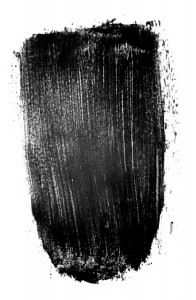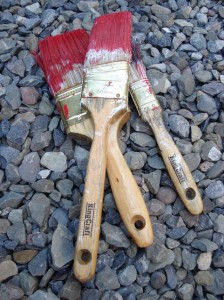Cleaning glass paint overspray
Glass paint overspray can be removed
Glass paint overspray can be removed from areas of the glass that aren’t supposed to be painted, but you’ll need to act promptly to correct a glass paint overspray problem! Glass paint is dry to the touch within about 3 hours of being applied, and the painted glass can be safely handled within about 4 hours of paint application.
Don’t attempt to remove any overspray until the piece is safe to handle. If you wait until the paint has completely dried, you can avoid damaging the paint that’s intended to remain. Small amounts of overspray, drips and runs can be removed by gently sanding the paint with #000 steel wool. If you intend to apply multiple coats of paint, you may want to repeat this process after each coat. This will allow to to keep the work free of a build-up of overspray. If you allow the overspray to build up, you may have a more difficult time removing it.
If you need to remove a large amount of overspray, you can use acetone to soften the paint. Once the overspray is soft, you can wipe it away with ordinary paper towels. Until the paint is completely cured, you can also remove overspray with a single-edged razor blade. In either case, polish the cleaned area with alcohol and #000 steel wool following the paint removal.
You can effectively remove glass paint for about two weeks after application, however once the paint has completely cured, it forms a permanent bond with the glass surface. Once this permanent bond has been created, you can no longer remove the paint. That’s why it’s important to act quickly to correct glass paint overspray issues.
If you’d like more information about working with Glassprimer™ glass paint, please check out the rest of our site. If you’d like to purchase Glassprimer™ glass paint, please visit our online store .
Photo Credit: Sacha Leclair, via FreeImages.com


